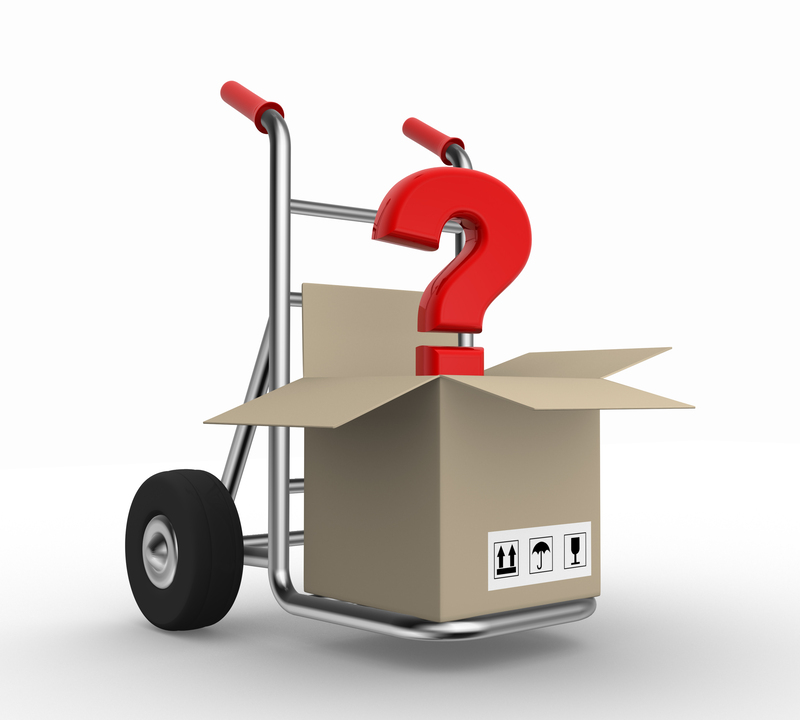Understanding weight and balance in piano relocation
Posted on 02/06/2025
Understanding Weight and Balance in Piano Relocation
Piano relocation is far more complex than simply moving a large object from one place to another. The intricacies of weight distribution, center of gravity, and the unique balancing requirements of different types of pianos make this task even more challenging than moving other household items. Safety, for both the instrument and those handling it, depends on a comprehensive understanding of these factors. In this in-depth guide, we will explore the essential aspects of weight and balance in piano relocation to ensure a smooth and accident-free transport.

Why Weight and Balance Matter in Piano Moving
Many underestimate the sheer weight of a piano, let alone its complex internal structure. Each component of a piano--the cast iron plate, soundboard, strings, and wooden casing--contributes to the overall mass and unique weight distribution. Unlike other forms of furniture, pianos possess a disproportionate center of gravity, fragile mechanisms, and often awkward shapes. Improper handling can result in structural damage, tuning deterioration, or even serious injury.
- Protects the Instrument: Proper balance prevents irreparable harm to delicate components like hammers and strings.
- Ensures Safety: Understanding how weight is distributed avoids unexpected tipping or falls during transport.
- Reduces Moving Stress: Balanced movement makes for smoother transitions through staircases, doorways, and transport vehicles.
Types of Pianos and Their Weight Characteristics
The two main categories of pianos--upright pianos and grand pianos--have distinct profiles when it comes to weight and balance.
Upright Pianos: Size, Shape, and Weight
- Spinet Uprights: The smallest, generally weighing 200-400 lbs (90-180 kg).
- Console Uprights: Slightly larger, usually 300-500 lbs (135-225 kg).
- Studio Uprights: Bulkier models can reach up to 600 lbs (270 kg).
- Full Uprights: The largest, sometimes exceeding 800 lbs (360 kg)!
Balance Consideration: Uprights have most of their weight toward the back, where the cast iron plate and soundboard are located. Attempting to move an upright without recognizing this top-heavy nature risks dangerous tipping and injury.
Grand Pianos: Elegant but Heavyweight
- Baby Grands: Usually 500-650 lbs (225-300 kg).
- Parlor Grands: Ordinarly 600-800 lbs (270-360 kg).
- Concert Grands: Can reach up to 1,200 lbs (545 kg) or more!
Balance Consideration: Grands possess a lower center of gravity due to their horizontal orientation, but their weight is unevenly distributed--mainly toward the tail end and bass side, where the strings and plate are most substantial. This calls for meticulous pre-planning and often, partial disassembly (such as removing the lyre, legs, and pedals) before moving.
The Science of Weight Distribution in Piano Relocation
Understanding weight and balance for pianos isn't just about numbers. It's about science. Here are the key principles:
1. Center of Gravity
The center of gravity is the point where the mass of the piano is concentrated. For uprights, this is high and near the back; for grands, it's often just behind the keyboard, closer to the bass side. Movers must always keep track of this point during lifting, tilting, and transitioning.
2. Leverage and Handling
Physics comes into play when moving such a heavy and awkward object. Improper lifting increases leverage at the wrong moment and can cause loss of control. Specialized equipment--like piano dollies, padded boards, straps, and even cranes for large grands--are often necessary to control weight safely.
3. Force and Floor Integrity
All that weight exerts tremendous force upon floors, thresholds, and staircases. Not spreading it out evenly with boards or pads can result in floor damage or structural strain--not to mention the threat of the piano tipping, especially on inclines.
Preparation: Essential Steps for Balancing Pianos in Transit
Comprehensive preparation is key to managing weight and balance when relocating any piano.
Assessing the Pathway and Environment
- Clear All Obstructions: Remove rugs, furniture, and clutter to allow for straight, unobstructed pathways.
- Measure Doorways and Hallways: Ensure the piano can pass through at every step--uprights usually travel upright, grands on their side.
- Check Floor Strength: Heavy pianos require floors to support concentrated weight, especially in older buildings.
Securing the Piano
- Lock the Keyboard Lid: Prevents the keys from shifting or getting hit.
- Wrap in Padded Blankets: Protects the finish and internal components from shocks and scrapes.
- Disassemble Large Grand Pianos: Remove legs and pedals for safer, more balanced moving.
Selecting Proper Moving Equipment
- Piano Skids: Distributes the weight and simplifies movement.
- Straps: Secure the instrument tightly and improve grip for handlers.
- Moving Dollies: Built to bear heavy loads and maintain balance through transitions.
- Cushioning Pads: Socks, rubber mats, and blankets soften impacts when setting the piano down.
Strategies and Techniques for Balancing During the Move
Handling piano weight and balance during relocation involves a blend of skill, strength, and physics. Here are expert strategies:
Upright Piano Relocation Tips
- Keep Upright: Never lay it flat or on its back.
- Move from the Bottom: Support the base, not the arms or top, for stability.
- Use Multiple People: At least two, often three, people ensure balance across the full width.
- Pace Carefully: Move in short steps, particularly through corridors and around corners, to keep weight shifting under control.
Grand Piano Moving Techniques
- Remove Legs and Pedals: Reduces weight and risk of snapping under pressure.
- Turn on Bass Side: Grands are typically placed on a piano board on their side, bass-side down, for optimal balance.
- Securely Strap and Wrap: Prevents shifting or rolling during movement.
- Lift with Coordination: Teams must communicate and lift together, handling the heaviest (tail) and lightest (keyboard) areas properly.
Stairs, Elevators, and Outdoor Terrain
- Use Ramps: Spreads weight, reduces risk of drops, and maintains balance.
- Check Elevators' Weight Limits: Most modern elevators can handle uprights, but verify for grands.
- Outdoor Moves: Watch for soft ground or uneven terrain--use plywood or boards to distribute weight.
Common Mistakes in Piano Weight Management and How to Avoid Them
Even experienced movers can falter if they don't respect the unique demands of piano weight and balance. Here are some frequent pitfalls:
- Underestimating the Weight: Leads to using too few people or inappropriate equipment.
- Mishandling the Balance Point: Risks tipping and catastrophic falls.
- Improper Disassembly: Leaving legs or pedals on a grand can cause jarring or collapse during movement.
- Neglecting Floor Protection: Scratches, cracks, or even holes can result from focusing solely on the piano.
- Poor Communication: One mover losing grip or moving too quickly can disrupt the delicate balance.
Professional Piano Movers vs. DIY: The Weighty Decision
While it can be tempting to move a piano yourself, hiring experienced piano relocation specialists is usually the safest course. Professionals bring:
- Specialized Equipment: Skids, cranes, and high-capacity dollies are often unavailable to homeowners.
- Expertise: Years of experience with piano weight and balance enable error-free transitions.
- Insurance Coverage: Your instrument is protected against unforeseen accidents.
If DIY is still your choice, follow the above guidelines carefully and never attempt to move a heavy piano alone.
Post-Move: Rebalancing, Reassembly, and Final Checks
The job isn't done when the piano is in place. Final steps for weight and balance in piano relocation include:
- Settling: Allow the piano to rest and acclimatize to its new environment before reassembling any removed parts.
- Reattaching Components: Attach legs, pedals, and music stands carefully, ensuring even weight distribution once again.
- Tuning: All moves, even the gentlest, can shift tuning--have a professional technician check and retune the instrument.

Frequently Asked Questions About Piano Weight and Balance
How heavy is the average piano?
Upright pianos typically range from 200 to 800 lbs (90-360 kg). Grand pianos span 500 to 1,200 lbs (225-545 kg) or more, depending on size and model.
Can two people move a piano?
Small spinets or consoles might be moved by two strong, well-coordinated people, but it's safer (and often necessary) to have more helpers, especially for larger or more challenging moves.
What's the biggest risk in moving a piano?
Loss of balance and sudden tipping are the greatest dangers. This can damage the instrument, floors, and, more importantly, injure movers.
Do I need to remove the keys or lid?
Never attempt to disassemble the internal mechanism unless you are a professional technician. Secure the lid and wrap the unit, but don't remove the keyboard or soundboard components.
Is insurance necessary for a piano move?
Absolutely. Professional movers carry specific insurance. For valuable instruments, it's wise to confirm coverage or purchase additional protection.
Conclusion: The Importance of Properly Handling Piano Weight and Balance
When it comes to piano relocation and managing its weight and balance, knowledge is power. Recognizing your instrument's unique weight distribution, planning all movements, using the right tools, and respecting both the piano and its surroundings will ensure not only the preservation of your valuable musical centerpiece, but also the safety of those moving it.
Whether you're an enthusiastic DIY mover or consulting with professionals, use this comprehensive understanding of weight and balance in piano relocation as your guide. Your piano--and your back--will thank you!



